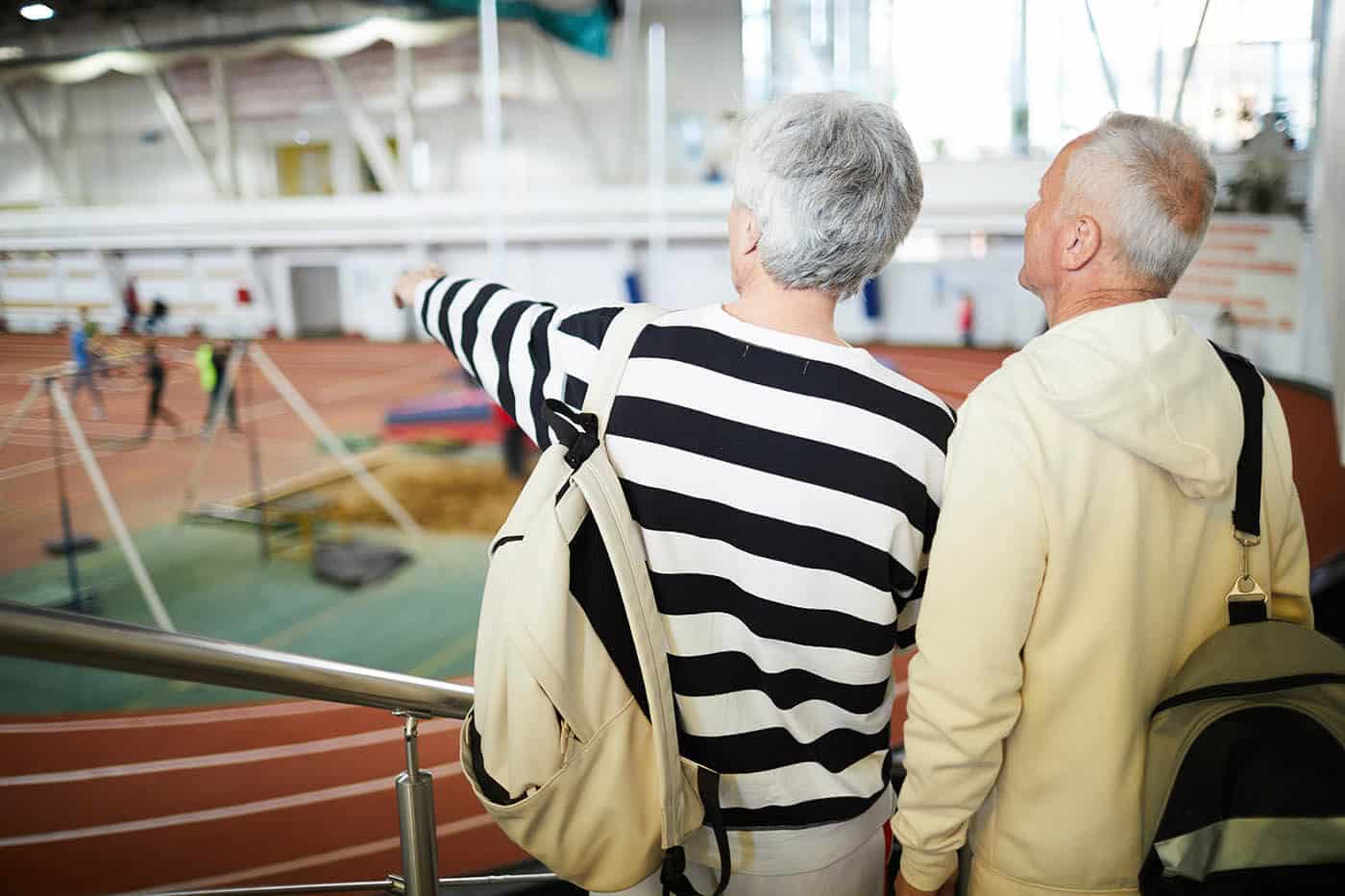 Is There Such a Thing as Senior-Safe Sports?
Is There Such a Thing as Senior-Safe Sports?
Getting older can make it challenging to play the sports you enjoyed in your youth. Stiff joints, reduced flexibility and arthritis prevent you from moving and playing like you once did. Injuries that heal slowly (or not at all), chronic conditions that weaken your body, and other physical problems may cause you to give up your favorite sports.
Fear not! Many senior-safe sports can take the place of those active sports. The best sports for seniors keep them active and let them express their competitive nature, but they’re also low impact, with a low risk of injury. Because movement is good for your body, stay active with these sports.
What Are Examples of Senior-Safe Sports?
Any sport that gets you up and moving, without the threat of contact or sharp twists and turns, may be considered safe for seniors. Some senior-safe sports to consider include cross-country skiing, archery, Nordic walking, cornhole, shuffleboard and croquet. Other options include:
- Swimming. Swimming is one of the most recommended workouts for all stages of life. It’s one of the best senior-safe sports because it’s easy on the joints, but a great full-body exercise. The water supports the weight of your body, limiting stress on your skeleton. It provides natural resistance to build and tone muscles. Swimming is a cardiovascular workout that strengthens the heart as well. It improves flexibility and builds muscles often ignored by other workouts. As if that weren’t enough, it also relieves stress and supports emotional health. Even walking or wading through a pool can be great exercise. And don’t forget water aerobics!
- Cycling. With cycling, you combine getting around town or going shopping with getting exercise. Look for comfortable bicycles designed specifically for seniors. For biking around a level town like Charleston, SC, try a one-speed bike.
- Yoga. The slow movements and deep breathing of yoga increase blood flow and warm up muscles. Yoga can also ease the symptoms of arthritis. Besides improving strength, flexibility and balance, holding a pose builds strength. This makes yoga one of the safest of the senior-safe sports.
- Rowing, kayaking, and canoeing. These racing or leisure activities provide a serious workout for all the major muscle groups. All three strengthen your core, back, legs and arms while burning more calories than either running or cycling. Since kayaking and canoeing mainly work the upper body, they’re often recommended for people who’ve injured their knees earlier in life.
- Golfing. If you walk all 18 holes, you put in about five miles and up to 2,000 calories. Otherwise, golf is a moderate form of exercise with a range of health benefits both physical and mental.
- Tai chi. This excellent practice can be performed in a group or alone. It helps your concentration, increases flexibility and is extremely low-impact, making it one of the best non-competitive senior-safe sports.
- Tennis. Both an aerobic and an anaerobic exercise, tennis builds leg strength and improves coordination, agility and balance. It’s a high impact sport, however, so your your game must evolve as you get older. You may sprint more slowly or smash less hard, but tennis remains good for your heart, coordination, balance and flexibility.
- Badminton. If tennis is too strenuous, get out the badminton racquet and net. Chasing the birdie increases the heartrate and is excellent for overall body health. Badminton can also increase strength and flexibility.
- Table tennis. Ping-pong improves the reflexes, improves balance, and keeps your brain sharp. In fact, it’s used to treat early-stage Alzheimer’s by activating various areas of the brain simultaneously to stimulate awareness.
What Else Can Seniors Play?
In addition to tennis, badminton and ping-pong, there’s the new sport of pickleball. Played indoors or outside on a small court, it combines the action of all three of the other sports. This fun sport:
- Engages your leg, core, arm and shoulder muscles
- Boosts your balance and strength
- Causes less strain on your knees than tennis because of its much smaller court
- Is easier on your shoulders, since the ball is easier to hit and the game doesn’t allow overhead serves
The fast pace demands eye-hand coordination, which keeps your thinking skills sharp. Despite its quirky name, the sport comes with risks. Its quick pace and abrupt stops, starts and changes in direction may result in leg injuries, including ankle sprains, knee sprains or torn hamstrings. Ask your doctor at the Southeastern Spine Institute if pickleball is a good idea for you.
